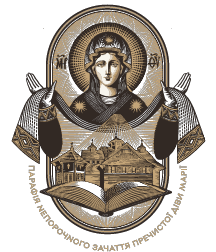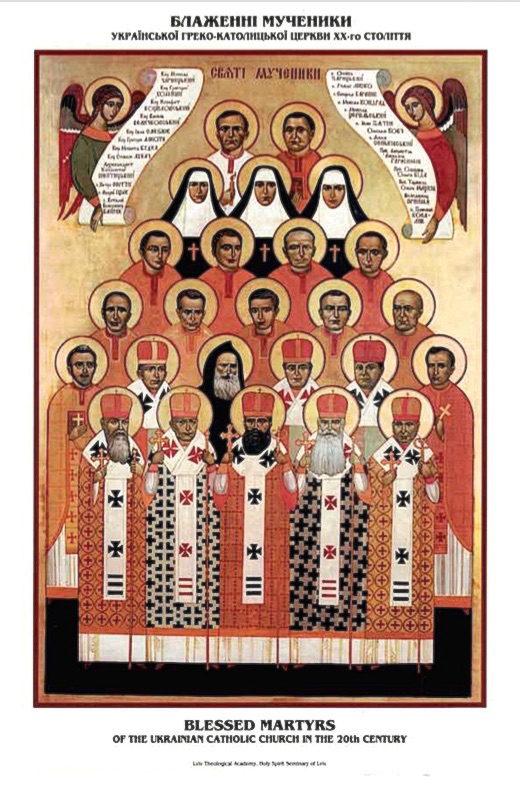His Beatitude Patriarch Sviatoslav blessed the transfer of the relics of new martyrs of Ukrainian Greek-Catholic Church to venerate in the projected Immaculate Conception Ukrainian Byzantine Catholic Shrine.
Pope John Paul II’s solemn proclamation of the new martyrs and faithful servants of God of the Ukrainian Greek-Catholic Church as blessed is another divine manifestation to our people. During more than 1,000 years of salvation history on our land, Ukrainian Christians have rejoiced in various signs of God’s presence. The Word has become incarnate among us has been changed into visible sacraments: the healing water of baptism, the oil of the Holy Spirit, the bread and wine of the Lord’s paschal feast. They lead us to the divine life. “God is with us!”
He has built His house here. Great Church councils throughout the ages and quiet little chapels speak to us. The warm and hospitable face of the Lord looks into our souls from childhood. His image is embroidered on our decorative cloths at home. The feasts of the liturgical year sanctify our time, invite us to overcome our lack of faith and our doubts, and to feel that we live in the age of the Kingdom of God.
We receive this mercy of the Lord through the blessing of hierarchs and priests, on whose heads we can still feel the warm hands of the priests and martyrs Hryhorii, Theodore, Josaphat, Nykyta, Hryhorii, Mykola, Semeon, Ivan and Vasyl. We celebrate together with monks and nuns who still today remember the sanctifying righteousness of Sister Josaphata and the “aristocracy of spirit” of priest and martyr Klymentii. They remember these fathers and sisters of their communities – kind, welcoming and, at the same time, brave and constant in the faith. We rejoice with Neonila Lysko, who can still today tell us about the eyes of her good husband, full of troubles: Neonila who for such a short time was comforted by his close presence but his glory will last. Together with Father Emilian Kovch’s children, who are with us, we pass on his testament of love of neighbor and love of enemy.
From now on from our midst, for us and for the world, the universal Church raises them up as examples of holiness, as heavenly friends of the Lord, humble figures of mortal human beings. Yesterday they lived among us or among our parents in our cities and villages, bravely fought with the greatest tyrants of human history, against wrongs and injustices done to their brothers and sisters. They also struggled with their own imperfections and with the simple worries of daily life. Their presence here was and now is, incredibly, still felt.
They walked our streets and rode on our roads, sat on our episcopal thrones and in our confessionals. They gave lectures at solemn conferences and reports from their professorial chairs, and studied in our Theological Academy and seminaries. They probably did not think that the terrible trial of martyrdom and its everlasting crown was waiting for them. They wore priestly vestments and the habits of our religious communities and heard stirring words from their spiritual directors about self-giving and self-dedication, which we often hear but receive as something everyday, as an abstraction, something unreal and far away in time and space.
Now their figures are strangely close, visible. Through them holiness itself is closer. They bring heaven closer to us – sometimes so unattainable – heaven, where they have gloriously found their place at the hand of the Almighty Father and Our Creator. And the land on which they walked only yesterday has itself become holier, receiving their hot blood and tortured bodies. Walking on this same earth we feel the grandeur of this holiness and the depth of this drama which they lived through and to which the Lord can call you and me.
Finally, we were all called long ago-called to love our neighbour, forgive our enemies, feed the hungry, tend to the wounded, comfort the weary, give hope to the hopeless and die to self in order to live for others. Today on our earth and in our Ukraine there is no lack of opportunities to dedicate yourself to God.
Through these blessed and martyrs, whom we are honouring today, the Lord has shown us that for us mere mortals, who are neighbours, fellow workers or students, relatives and family members or just friends, for us such accomplishments are possible. God reveals Himself always and everywhere: in the quiet of a monastic cell and in an inspiring sermon in church, among the Siberian snows and in the burning oven of Majdanek, in the joy of motherhood and in the cries of an orphaned child …
Will we be able here and now, and then tomorrow and elsewhere, to respond to this appearance of our Lord? Are we ready to give witness to Christ in everyday life or, God forbid, in the face of mortal danger? We hope in the Lord that this is so. And our first step in this direction is our joyful celebration of these abundant blessings which have come to us through the solemn glorification of the new martyrs and faithful servants of God. Let us be glad with them and with certainty follow in their footsteps!
Father Borys Gudziak, Ph.D. is rector of the Lviv Theological Academy and director of the Institute of Church History. Written in 2001.
Church of the Martyrs
Following are biographical materials prepared by the Ukrainian Greek-Catholic Church. The information is organized in chronological order.
Sanctifying righteousness
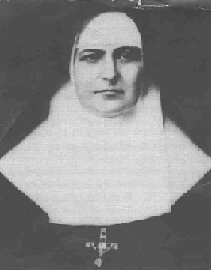
Sister Josaphata (Michaelina) Hordashevska was born in Lviv on November 20, 1869. At the age of 18, influenced by the retreats of the Basilian Fathers, she felt the call to consecrate her life to God. Together with Father Kyryl Seletskyi, pastor in Zhuzhel, and Father Yeremia Lomnytskyi OSBM, she established a new congregation, the Sisters Servants of Mary Immaculate, called to an active apostolate among the people. Today the Sisters Servants is the biggest female religious community in the Ukrainian Greek-Catholic Church.
Sister Josaphata’s holiness showed itself in her total dedication to her calling, in constantly embodying in her life Christ’s command to love God and neighbor and in humbly bearing all her difficulties and sufferings. She died on April 7, 1919, after a long and severe illness, prophesying the day of her death, which she accepted consciously, with prayer on her lips.
“She showed her love for her people through her heart-felt desire to lift them up morally and spiritually: she taught children, youth and women, served the sick, visited the poor and needy, taught liturgical chant and looked after the church’s beauty.” – From the testimony of Sister Filomena Yuskiv.
Apostle of unity

Priest and martyr Father Leonid Feodorov was born to a Russian Orthodox family on November 4, 1879, in St. Petersburg, Russia. In 1902, he left his studies at the Petersburg Spiritual Academy and went abroad. In Rome he converted to Catholicism. He studied in Anagni, Rome and Frieburg. Contact with Metropolitan Andrey Sheptytsky had a great influence on Father Leonid’s spiritual development. On March 25, 1911, he was ordained a Greek-Catholic priest. In 1913 he became a monk of the Studite order in Bosnia.
After his return to tsarist Russia, in connection with the beginning of World War One he was exiled to Tobolsk, Siberia because he was a Catholic. In 1917 he was released and appointed head of the Russian Greek-Catholic Church, with the title of exarch. His second imprisonment came in 1923, now by the Bolsheviks, for 10 years. From 1926 to 1929 he served his term in Solovky and later in exile in Pinieza, Kotlas and Viatka. He died as a martyr for the faith and Church unity on March 7, 1935.
“We expect that the exarch is on the road to glorification through beatification. Of course, it is much too early to talk about this, but all of us were strongly impressed by his holiness, strengthened by the crown of martyrdom and death; this certainly supports our expectations. On the other hand, as a Russian Catholic, as exarch, as someone who died at the hands of the Bolsheviks, it seems to us that he will be right in the centre of attention of the entire Church.” – From Metropolitan Andrey Sheptytsky’s letter to Prince P. Volkonski of May 4, 1935.
Bloody Unification
Stalin’s attack on the Ukrainian Greek-Catholic Church (UGCC) began immediately after the first occupation of western Ukraine in September 1939. This occupation was in accordance with the Soviet-Nazi Molotov-Ribbentrop Pact and lasted until June 1941. In this period all UGCC property was confiscated, and schools and hospitals were nationalized. Church publications and religious organizations were forbidden, religious educational institutions and presses were closed, the activities of religious congregations were limited, brutal atheist propaganda and mass terror, and the deportation of a peaceful population began.
“It is absolutely clear that under the Bolsheviks we all felt destined for death; they did not conceal their intention to destroy, to strangle Christianity, to erase its smallest traces.” – From Metropolitan Andrey Sheptytsky’s letter to the nuncio, Rotti, of August 30, 1941.
Patron of Students
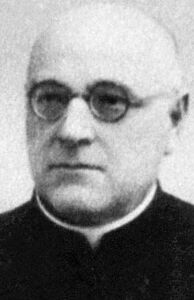 Priest and martyr Father Mykola Konrad was born on May 16, 1876 in the village of Strusiv, Ternopil District. He finished his philosophical and theological studies in Rome, where he defended his doctoral dissertation. In 1899, he was ordained to the priesthood. He taught in a high school in Berezhany and Terebovlia. In 1929 in Lviv he founded Obnova (Renewal), the first Ukrainian association of Catholic students.
Priest and martyr Father Mykola Konrad was born on May 16, 1876 in the village of Strusiv, Ternopil District. He finished his philosophical and theological studies in Rome, where he defended his doctoral dissertation. In 1899, he was ordained to the priesthood. He taught in a high school in Berezhany and Terebovlia. In 1929 in Lviv he founded Obnova (Renewal), the first Ukrainian association of Catholic students.
In 1930 Metropolitan Andrey Sheptytsky invited him to teach at the Lviv Theological Academy and later appointed him to be a parish priest in the village of Stradch, near Yaniv. There, as in previous years, he showed his great diligence and responsibility, fulfilling his pastoral duties, in particular, spiritual guidance for youth. Returning from visiting a sick woman, who had requested the sacrament of reconciliation, he died tragically as a martyr for the faith at the hands of the NKVD on June 26, 1941, near Stradch.
“Doctor Konrad, a professor at the academy, my catechist … O, he was a distinguished person. An ideal man. He was very involved with youth; he had a heart for youth – and for his people. He wanted us to be patriots, to be good and aware students. That was Father Konrad…” – From an interview with Father Mykola Markevych.
Sacrificial Cantor
 Martyr Volodymyr Pryima was born on July 17, 1906, in the village of Stradch, Yavoriv District. After graduating from a school for cantors he became the cantor and choir director in the local church. He took active part in the life of his parish. Always and in everything he respected human dignity and built his life on the principles of the gospel. On June 26, 1941, agents of the NKVD mercilessly tortured and murdered him along with Father Mykola Konrad.
Martyr Volodymyr Pryima was born on July 17, 1906, in the village of Stradch, Yavoriv District. After graduating from a school for cantors he became the cantor and choir director in the local church. He took active part in the life of his parish. Always and in everything he respected human dignity and built his life on the principles of the gospel. On June 26, 1941, agents of the NKVD mercilessly tortured and murdered him along with Father Mykola Konrad.
“Father Konrad went with the holy sacraments to fulfil his sacred obligation, hearing a woman’s confession in the neighbouring village. He felt he had to go, though he was stopped. I know that they stopped him and said: ‘Father, don’t go. Look what’s happening: the war has started, anything could happen.’ He said that this was his sacred duty and he had to go. He got dressed and left together with Volodymyr Pryima, the cantor. They didn’t come back. After a week they were found there, murdered. People thought something was wrong. So they went to look for them and they found them there. It was awful. The cantor’s wife had two children. One was three, the other was four. Mama told me how when they were found everyone was overcome by what they saw. The cantor was especially cut up, his chest stabbed with a bayonet many times.” – From an interview with Yuriy Skavronskyi.
Professor and Pastor
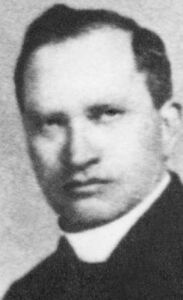 Priest and martyr Father Andrii Ischak was born on September 20, 1887, in Mykolaiv, in the Lviv District. He finished his theological studies at the universities in Lviv and Innsbruck (Austria). In 1914 he received his Ph.D. in theology and was ordained. Beginning in 1928 he taught dogmatic theology and canon law at the Lviv Theological Academy.
Priest and martyr Father Andrii Ischak was born on September 20, 1887, in Mykolaiv, in the Lviv District. He finished his theological studies at the universities in Lviv and Innsbruck (Austria). In 1914 he received his Ph.D. in theology and was ordained. Beginning in 1928 he taught dogmatic theology and canon law at the Lviv Theological Academy.
He was able to combine his professorial duties with his pastoral work in the village of Sykhiv near Lviv, where he met his death. Even under the threat of great danger he did not leave his parishioners without spiritual guidance. He was faithful to the end. On June 26, 1941, he died a martyr for the faith at the hands of soldiers of the retreating Soviet army.
“As the war began, the priest was taken at Persenkivka, the neighbouring station. Sometime in the afternoon they took him, detained him until the evening, then they let him go. My dad, because they knew each other well, told him: ‘Father, when they let you go, I would advise you to hide for a few days.’ Because it was already clear that the Germans were coming and the Bolsheviks would be fleeing. ‘Hide yourself and we’ll survive.’ But the priest said: ‘Ivan, the shepherd doesn’t abandon his flock. And I can’t leave my parishioners and conceal myself.’ In two days the military came and took him from his home. It was overgrown there with bushes, some distance from the parish, maybe a half-kilometre. They brought him there and killed him. They shot him in the stomach, and it looked like they also stabbed him with a knife.” – From the testimony of Ivan Kulchytskyi.
Benevolent Prior
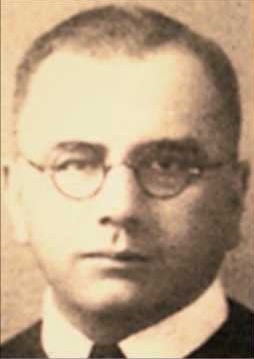 Priest and martyr Father Severian Baranyk was born on July 18, 1889, place of birth unknown. On September 24, 1904, he entered the monastery of the Basilian Fathers in Krekhiv. He was ordained to the priesthood on February 14, 1915. In 1932 he became the hegumen (prior) of the monastery in Drohobych. In life he was noted for his special kindnesses to youth and orphans. He inspired all with his joy and was famous for his preaching.
Priest and martyr Father Severian Baranyk was born on July 18, 1889, place of birth unknown. On September 24, 1904, he entered the monastery of the Basilian Fathers in Krekhiv. He was ordained to the priesthood on February 14, 1915. In 1932 he became the hegumen (prior) of the monastery in Drohobych. In life he was noted for his special kindnesses to youth and orphans. He inspired all with his joy and was famous for his preaching.
On June 26, 1941, the NKVD arrested him. They brought him to a prison in Drohobych, after which he was never seen alive again. His body, mutilated by tortures, was found among other dead prisoners. He died a martyr for the faith at the end of June 1941.
“Behind the prison I saw a big hole which had been covered up, filled with sand. When the Bolsheviks retreated the Germans came and people rushed to the prison to find their relatives. The Germans allowed people into the area of the prison in small groups to claim their murdered relatives, but most people stood by the gates. I was a little boy and didn’t see anything from the gates, so I went to the side and climbed a tree. There was a terrible stink … I saw how the Germans sent people to uncover the hole which was filled with sand. The hole was new, because the people uncovered it with their hands. They dragged out the murdered bodies. There was a little covering near the hole, and under it I saw the dead body of Father Severian Baranyk, Basilian, with visible marks of his prison tortures; his body had unnaturally swelled, black, his face terrible. Dad later said that on his chest the sign of the cross had been slashed.” – From the testimony of Yosyf Lastoviak.
Loving Monk
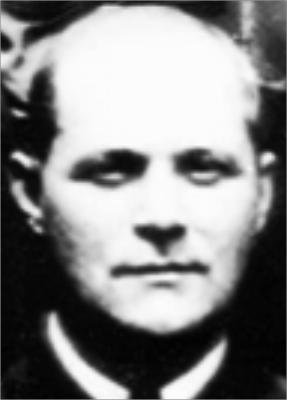 Priest and martyr Father Yakym Senkivskyi was born on May 2, 1896, in the village of Hayi Velyki, Ternopil District. After completing his theological studies in Lviv, he was ordained as a priest on December 4, 1921. He received a Ph.D. in theology in Innsbruck (Austria). In 1923 he became a novice in the Basilian order in Krekhiv. After professing his first vows he was assigned to serve in the village of Krasnopuscha, and later in the village of Lavriv, in the area of Starosambir. From 1931 to 1938 at St. Onufry monastery in Lviv he was chaplain of the Marian Society, he ministered to children and youth and organized a Eucharistic Society. In 1939, he was appointed proto-hegumen (abbot) at the monastery in Drohobych.
Priest and martyr Father Yakym Senkivskyi was born on May 2, 1896, in the village of Hayi Velyki, Ternopil District. After completing his theological studies in Lviv, he was ordained as a priest on December 4, 1921. He received a Ph.D. in theology in Innsbruck (Austria). In 1923 he became a novice in the Basilian order in Krekhiv. After professing his first vows he was assigned to serve in the village of Krasnopuscha, and later in the village of Lavriv, in the area of Starosambir. From 1931 to 1938 at St. Onufry monastery in Lviv he was chaplain of the Marian Society, he ministered to children and youth and organized a Eucharistic Society. In 1939, he was appointed proto-hegumen (abbot) at the monastery in Drohobych.
He was arrested by the Bolsheviks on June 26, 1941. According to the testimony of various prisoners, he was boiled to death in a cauldron in the Drohobych prison on June 29. Because of his righteous life the faithful held him up as a model of service to Church and nation. He died a martyr for the faith.
“From the first days of his time in Drohobych he became the favourite of the whole town. He gained the affection of the population with his remarkable talent, his ability to speak to the scholar and the labourer, young and old, and even to the little child. He was always polite and with a warm smile on his face. In your soul you felt that this person had no malice, and in addition to the impression of humility and dignity, a true servant of Christ was evident.” – From the memories of Father Orest Kupranets.
Fearless Preacher
 Priest and martyr Father Zenovii Kovalyk was born on August 18, 1903, in the village of Ivakhiv near Ternopil. He entered the Congregation of the Redemptorists and on August 28, 1926, he made his religious vows. He received his philosophical and theological education in Belgium. He returned to Ukraine and on September 4, 1937, was ordained to the priesthood. He served as a missionary in Volyn.
Priest and martyr Father Zenovii Kovalyk was born on August 18, 1903, in the village of Ivakhiv near Ternopil. He entered the Congregation of the Redemptorists and on August 28, 1926, he made his religious vows. He received his philosophical and theological education in Belgium. He returned to Ukraine and on September 4, 1937, was ordained to the priesthood. He served as a missionary in Volyn.
On December 20, 1940, he was arrested in church while giving a homily. After terrible tortures he was murdered by the Communists in a mock crucifixion against a wall in a prison on Zamarstynivska Street, in Lviv in June 1941. He died a martyr for the faith.
“[His] sermons made an incredible impression on the listeners. But in the prevailing system of denunciations and terror this was very dangerous for a preacher. So I often tried to convince Father Kovalyk … that he needed to be more careful about the content of his sermons, that he shouldn’t provoke the Bolsheviks, because here was a question of his own safety. But it was all in vain. Father Kovalyk only had one answer: ‘If that is God’s will, I will gladly accept death, but as a preacher I will never act against my conscience.’” – From the memories of Yaroslav Levytskyi.
A New Order
The beginning of the Nazi-Soviet war on June 22, 1941, for many western Ukrainians meant, first of all, the liquidation of the hated Bolshevik domination and led to unfulfilled expectations for the revival of religious freedom and the achievement of their national aspirations. However, it was soon apparent that changing one bloody regime for another would not change the essence of totalitarianism.
“… The terror is growing. During the last two months in Lviv more than 40,000 Jews were murdered. The authorities conducted searches in the church, in my residence and in parts of the monastery … Two monks were imprisoned, and perhaps there will be attempts to create some ‘show trials.’ The arrests continue. This is a regime of raving madmen.” – From a letter of Metropolitan Andrey Sheptytsky to Cardinal Tisserand of December 28, 1942.
Rescuer of the Doomed
 Priest and Martyr Father Emilian Kovch was born on August 20, 1884, in Kosmach near Kosiv. After graduating from the College of Ss. Sergius and Bacchus in Rome, he was ordained to the priesthood in 1911. In 1919 he became field chaplain for the Ukrainian Galician Army. After the war and until his imprisonment he conducted his priestly ministry in Przemysl (Peremyshl), at the same time tending to his parishioners’ social and cultural life. He helped the poor and orphans, though he had six children of his own.
Priest and Martyr Father Emilian Kovch was born on August 20, 1884, in Kosmach near Kosiv. After graduating from the College of Ss. Sergius and Bacchus in Rome, he was ordained to the priesthood in 1911. In 1919 he became field chaplain for the Ukrainian Galician Army. After the war and until his imprisonment he conducted his priestly ministry in Przemysl (Peremyshl), at the same time tending to his parishioners’ social and cultural life. He helped the poor and orphans, though he had six children of his own.
During World War II he bravely carried out his priestly duties, preaching love to people of all nationalities and rescuing Jews from destruction. He was arrested by the Gestapo on December 30, 1942. He displayed heroic bravery in the concentration camp, protecting the prisoners sentenced to death from falling into despair. He was burned to death in the ovens of the Majdanek Nazi death camp on March 25, 1944. He was recognized as a “Righteous Ukrainian” by the Jewish Council of Ukraine on September 9, 1999.
“I understand that you are trying to free me. But I am asking you not to do anything. Yesterday they killed 50 persons here. If I were not here, who would help them to endure these sufferings? I thank God for His kindness to me. Except heaven this is the only place I would like to be. Here we are all equal: Poles, Jews, Ukrainians, Russians, Latvians and Estonians. I am the only priest here. I couldn’t even imagine what would happen here without me. Here I see God, Who is the same for everybody, regardless of religious distinctions which exist among us. Maybe our Churches are different, but they are all ruled by the same all-powerful God. When I am celebrating the Holy Mass, everyone prays … Don’t worry and don’t despair about my fate. Instead of this, rejoice with me. Pray for those who created this concentration camp and this system. They are the only ones who need prayers May God have mercy on them…” – From Father Emilian Kovch’s letters written in the concentration camp to relatives.
Second Assault
The prospect of the return of Soviet power to western Ukraine after the defeat of the German Army on the Eastern Front led the hierarchy and faithful of the UGCC to fear for the fate of the Church. All too painful were the still fresh memories of the violence of the Communist regime against the conscience of the faithful during the previous Soviet conquest of less than two years.
“The Bolshevik Army is approaching … This news fills all the faithful with fear. Everyone … is convinced that they are destined for certain death.” – From a letter of Metropolitan Andrey Sheptytsky to Cardinal Tisserand on March 22, 1944.
“Because she was a nun”
 Nun and Martyr Sister Tarsykiya Matskiv was born on March 23, 1919 in the village of Khodoriv, Lviv District. On May 3, 1938 she entered the Sisters Servants of Mary Immaculate. After professing her first vows on November 5, 1940, she worked in the convent, sewing clothes for the sisters and teaching the skill to others. Even prior to the Bolshevik arrival in Lviv, Sister Tarsykiya had made a private oath to her spiritual director, Father Volodymyr Kovalyk OSBM, that she would sacrifice her life for the conversion of Russia and for the good of the Catholic Church.
Nun and Martyr Sister Tarsykiya Matskiv was born on March 23, 1919 in the village of Khodoriv, Lviv District. On May 3, 1938 she entered the Sisters Servants of Mary Immaculate. After professing her first vows on November 5, 1940, she worked in the convent, sewing clothes for the sisters and teaching the skill to others. Even prior to the Bolshevik arrival in Lviv, Sister Tarsykiya had made a private oath to her spiritual director, Father Volodymyr Kovalyk OSBM, that she would sacrifice her life for the conversion of Russia and for the good of the Catholic Church.
On July 17, 1944 Soviet soldiers surrounded the monastery, determined to destroy it. At 8 a.m. Sister opened the door, expecting a priest who was supposed to celebrate the liturgy. Without warning an automatic shot her dead. All her life she witnessed to the authenticity of the consecrated life. She died a martyr for the faith.
“Suddenly the bell at the gate rang. We thought it was the priest. Sister Tarsykia opened the door, asked Sister Maria for the key to the front door and went to the main entrance. Then a shot rang out and Sister Tarsykia fell down dead. The soldier who shot her did not really explain why he did it. Later they said that he said he killed her because she was a nun.” – From the testimony of Sister Daria Hradiuk.
Friendly missionary
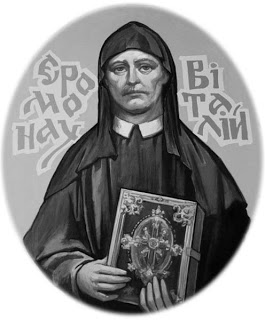 Priest and Martyr Father Vitalii Bairak was born on February 24, 1907 in the village of Shvaikivtsy, Ternopil District. In 1924 he entered the Basilian monastery. He was ordained a priest on August 13, 1933. In 1941 he was appointed superior of the Drohobych monastery, in place of the recently martyred Father Yakym (Senkivskyi).
Priest and Martyr Father Vitalii Bairak was born on February 24, 1907 in the village of Shvaikivtsy, Ternopil District. In 1924 he entered the Basilian monastery. He was ordained a priest on August 13, 1933. In 1941 he was appointed superior of the Drohobych monastery, in place of the recently martyred Father Yakym (Senkivskyi).
On September 17, 1945 the NKVD arrested Father Vitalii and on November 13 sentenced him to eight years’ imprisonment “with confiscation of property” (though he had none). In life he was distinguished for his friendliness, his activeness in mission and preaching. He possessed the gift of spiritual direction. He died a martyr for the faith just before Easter 1946 after having been severely beaten in the Drohobych prison.
“Living in the territory that had been temporarily occupied by German forces…, he wrote an article with a negative position towards the Bolshevik Party, which had been published in the anti-Soviet calendar Misionar [“Missionary”] in 1942.” – From the personal file of V. V. Bairak in the archives of the Ministry of Internal Affairs.
Father-Psalmist
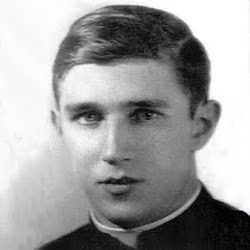 Priest and Martyr Father Roman Lysko was born on August 14, 1914 in Horodok, Lviv District. He finished his theological studies at the Lviv Theological Academy. Possessing special poetic and artistic talents, he and his wife joyfully conducted youth ministry together. On August 28, 1941 he was ordained to the priesthood by Metropolitan Andrey Sheptytsky.
Priest and Martyr Father Roman Lysko was born on August 14, 1914 in Horodok, Lviv District. He finished his theological studies at the Lviv Theological Academy. Possessing special poetic and artistic talents, he and his wife joyfully conducted youth ministry together. On August 28, 1941 he was ordained to the priesthood by Metropolitan Andrey Sheptytsky.
He refused to sign a statement of conversion to Orthodoxy, remaining faithful to his Church and his people. On September 9, 1949 he was arrested by the NKVD and imprisoned in Lviv. Until 1956, according to information given after his family had been turned away many times, it was said that he died on October 14, 1949 from paralysis of the heart. But many witnesses report that they saw him in prison later, or they heard him singing psalms at the top of his lungs. It was reported that they sealed him up, alive, in a wall. He gave his life as a martyr for the faith. “He was imprisoned on Lontskyi Street. His mother brought him some packages. Sometimes his grandmother came from Zhulychi to visit him. At first the packages were accepted. The prisoner always had a right to thank the giver with the same card [with which the package was sent]. These cards were always sent back, even the bags in which they usually put packages. And there were always those cards, on which he wrote, ‘Thank you. Many kisses,’ and signed it.
“After the murder of Galan [a Communist agitator], they refused to accept the packages. But after six months when they started to accept packages again, then the relatives found a card with ‘Thanks’ and a signature written, but in a stranger’s hand. It was a completely different handwriting.” – From an interview with his niece Lidia Kupchyk.
Liquidation by the State
Immediately after the Red Army returned to western Ukraine in the summer of 1944 the previous limitations imposed on the Ukrainian Greek-Catholic Church were renewed. But the great authority possessed by the whole Church and its head, Metropolitan Andrey Sheptytsky, forced the state during the first period to avoid direct confrontation. The war with Nazi Germany was finishing, and the spiritual father of the Church and the people, Servant of God Andrey, passed into eternity in the odor of sanctity on November 1, 1944.
Then the Soviet security services prepared a special plan “for detachment of parishes of the Greek-Catholic (Uniate) Church in the USSR from the Vatican and their subsequent unification with the Russian Orthodox Church.” This plan carried out Stalin’s direct order and received his praise. On April 11, 1945 with no proof of guilt, Metropolitan Josyf Slipyj, Bishops Hryhorii Khomyshyn, Nykyta Budka, Mykola Charnetskyi and Ivan Liatyshevskyi were arrested. Soon after that the Bishops of Przemsyl, Josaphat Kotsylovsky and Hryhory Lakota, about 500 priests all over western Ukraine, in addition, almost all eparchial officials, professors of the Theological Academy and seminaries, the most gifted pastors.
With the combined efforts of party and government structures, the police organs and the Orthodox hierarchy, by means of open terror and false demagoguery, the “liquidation of the union” was proclaimed in 1946 in western Ukraine in the so-called “Lviv pseudo-Sobor [“Council”]” and in 1949 in Transcarpathia. Regardless of the persecution, the authorities were not able to break the will of the bishops and to convince one of them to renounce his Church for a career in the Church of the “regime,” the Russian Orthodox Church. “…Then you will be handed over to be persecuted and put to death … At that time many will turn away from the faith and will betray and hate each other, and many false prophets will appear and deceive many people. Because of the increase of wickedness the love of most will grow cold, but he who stands firm to the end will be saved.” (Gospel of St. Matthew 24: 9-14)
Unbending Fighter
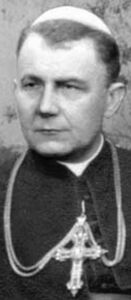 Bishop and Martyr Hryhorii Khomyshyn was born on March 25, 1867 in the village of Hadynkivtsi, Ternopil District. After graduating from the Lviv seminary in 1893, he was ordained to the priesthood. He continued his theological studies in Vienna (1894-1899), earning a doctorate. In 1902, Metropolitan Andrey Sheptytsky appointed Father Hryhorii rector of the Seminary in Lviv, and in 1904 he was ordained bishop of Ivano-Frankivsk.
Bishop and Martyr Hryhorii Khomyshyn was born on March 25, 1867 in the village of Hadynkivtsi, Ternopil District. After graduating from the Lviv seminary in 1893, he was ordained to the priesthood. He continued his theological studies in Vienna (1894-1899), earning a doctorate. In 1902, Metropolitan Andrey Sheptytsky appointed Father Hryhorii rector of the Seminary in Lviv, and in 1904 he was ordained bishop of Ivano-Frankivsk.
In 1939, he was arrested for the first time by the NKVD. His second arrest was in April of 1945, after which he was taken to Kyiv’s Lukianivska prison. Bishop Hryhorii remained an example for the Church of the bravery of a soldier of Christ, showing perseverance in God’s truth in the most difficult moments of life. He died a martyr for the faith in the infirmary of the NKVD prison in Kyiv on January 17, 1947.
“At the Kyiv prison the interrogations were conducted by Interrogator Dubok. He was a horrible sadist. He investigated my case too This Dubok told me himself how he had killed the bishop: ‘So you, Khomyshyn, spoke out against communism?’ The bishop, as always, replied resolutely: ‘I did and I will’. ‘Did you fight against the Soviet authority? “Yes, I did and I will!’ Then Dubok became outraged and grabbed some books written by the bishop, which lay on the table in front of him, and started cruelly beating His Excellency with them, on his head and everywhere else.” – From the testimony of Father Petro Heryliuk-Kupchynskyi.
Undying Spirit of the Carpathians
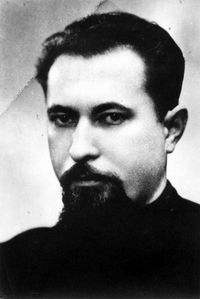 Bishop and Martyr Theodore Romzha was born on April 14, 1911, in the village of Velykyi Bychkiv, Zakarpattia to a family of railroad workers. He finished his theological studies at the Papal Gregorian University in Rome. In 1938 he became pastor in the mountain villages of Berezevo and Nyzhnii Bystryi outside of Khust. Beginning with the fall of 1939 he taught philosophy and was spiritual director at the Uzhorod seminary. On September 24, 1944, soon after the arrival of the Soviet Army, he was ordained to the episcopacy.
Bishop and Martyr Theodore Romzha was born on April 14, 1911, in the village of Velykyi Bychkiv, Zakarpattia to a family of railroad workers. He finished his theological studies at the Papal Gregorian University in Rome. In 1938 he became pastor in the mountain villages of Berezevo and Nyzhnii Bystryi outside of Khust. Beginning with the fall of 1939 he taught philosophy and was spiritual director at the Uzhorod seminary. On September 24, 1944, soon after the arrival of the Soviet Army, he was ordained to the episcopacy.
Because Bishop Theodore bravely refused to cooperate with the authorities in the liquidation of the Greek-Catholic Church and separate from the Roman Apostolic See, government organs decided to destroy him. On October 27, 1947 a military vehicle ran into the bishop’s horse-carriage. When the soldiers saw that he didn’t die in the accident, they beat him and his companions into unconsciousness. On November 1 of that year when Bishop Theodore was beginning to recover, he was poisoned in the Mukachiv hospital by workers cooperating with the security services. He died a martyr for the faith.
“According to the instructions of Khruschev, a member of the Politburo (Central Committee of the Communist Party) of Ukraine and the first secretary of the same, according to the plan developed by the Ministry of State Security in Ukraine and approved by Khruschev, Romzha was eliminated in Mukachiv. As the head of the Greek-Catholic Church, he had actively opposed the uniting of Greek-Catholics to Orthodoxy.” – From a letter of Pavlo Sudoplatov, general of state security, to delegates of the 23rd Assembly of the Communist Party of the Soviet Union.
“Deported” into Eternity
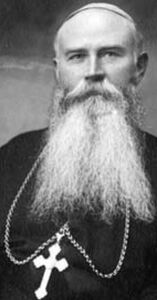 Bishop and Martyr Josaphat Kotsylovsky was born on March 3, 1876 in the village of Pakoshivka, Lemkiv District. He graduated with a degree in Theology from Rome in 1907, and later on October 9 of that year he was ordained to the priesthood. Not long after that he was appointed vice-rector and professor of Theology at the Ivano-Frankivsk seminary. In 1911 he entered the novitiate of the Basilian order. He was ordained a bishop on September 23, 1917 in Przemysl (Peremyshl) upon the return of Metropolitan Andrey (Sheptytsky) from captivity in Russia.
Bishop and Martyr Josaphat Kotsylovsky was born on March 3, 1876 in the village of Pakoshivka, Lemkiv District. He graduated with a degree in Theology from Rome in 1907, and later on October 9 of that year he was ordained to the priesthood. Not long after that he was appointed vice-rector and professor of Theology at the Ivano-Frankivsk seminary. In 1911 he entered the novitiate of the Basilian order. He was ordained a bishop on September 23, 1917 in Przemysl (Peremyshl) upon the return of Metropolitan Andrey (Sheptytsky) from captivity in Russia.
In September of 1945 the Polish Communist authorities arrested him and on June 26, 1946, after his next arrest, they forcibly took him to the USSR and placed him in a prison in Kyiv. Throughout his life he showed his perseverance of service, to make the Christian faith firm and to grow in human souls. He died a martyr for the faith on November 17, 1947 in the Chapaivka concentration camp near Kyiv.
“I came to Protection Monastery and the hegumena [prioress] told me the story. When they arrested Bishop Kotsylovsky they arrested their Orthodox bishop of Kyiv at the same time. When they brought a package to Chapaivka, that Orthodox bishop said: ‘Uniate Bishop Josaphat Kotsylovsky is confined in the same camp with me.’ And he asked those nuns, if they could, to bring a package to Bishop Josaphat as well. So they brought a package for the one bishop and for the other … Once when she brought a package, the bishop said that Kotsylovsky had died. And he asked her, because the dead were all thrown into one hole, if they could borrow some money or get some money somewhere. He asked her ‘to bury him in a separate grave, because this was a holy man.” – From the testimony of Father Josaphat Kavatsivo.
Archpastor in Three Parts of the World
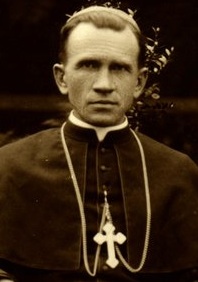 Bishop and martyr Nykyta Budka was born on June 7, 1877, in the village of Dobomirka, Zbarazh District. In 1905 after finishing theological studies in Vienna and Innsbruck he was ordained to the priesthood by Metropolitan Andrey Sheptytsky. From the very beginning he gave great attention to the ministry for Ukrainian emigrants. The Holy See appointed him first bishop for Ukrainian Catholics in Canada in July 1912, and he was ordained bishop on October 14, 1912. In 1928 he returned to Lviv and became vicar general of the Metropolitan Curia in Lviv.
Bishop and martyr Nykyta Budka was born on June 7, 1877, in the village of Dobomirka, Zbarazh District. In 1905 after finishing theological studies in Vienna and Innsbruck he was ordained to the priesthood by Metropolitan Andrey Sheptytsky. From the very beginning he gave great attention to the ministry for Ukrainian emigrants. The Holy See appointed him first bishop for Ukrainian Catholics in Canada in July 1912, and he was ordained bishop on October 14, 1912. In 1928 he returned to Lviv and became vicar general of the Metropolitan Curia in Lviv.
[Editor’s note: Since his beatification, more information has been discovered regarding the arrest and death of Nykyta Budka. Hence we have removed the orginal text of Fr. Borys Gudziak. Based on recent research, we present the following account by Rev. Dr. Athanasius McVay of the Eparchy of Edmonton who has spent years research the life and works of Budka. Fr. Athanasius updates his work on his personal blog]
Blessed Nykyta Budka was arrested in Lviv by the Soviets on 11 April 1945 and transported to Kyiv the following day. For the next twelve months he was interrogated and tried for ‘crimes’ against the Soviet Union and the Communist Party. A military tribunal sentenced him to five-years imprisonment on 29 May 1946. After that he vanished and, for over ten years, no one knew his whereabouts or even if he was alive. It was rumoured that Budka was being held in Siberia. Instead, he was among the many innocent people who had been sent to prison camps near Karaganda, Kazahstan. After Stalin’s death, Soviet authorities began to release the survivors. These men and women were finally able to tell the stories about those who had lived and died in the gulag. Among the survivors from Kazakhstan were Blessed Bishops Ivan Liatyshevsky and Aleksander Khira, and future-archbishop, Father Volodymyr Sterniuk. In 1958 Soviet authorities finally confirmed that Nykyta Budka had died close to 1 October 1949, but more precise dates and details are still lacking to this day.
Budka and other Ukrainian Catholics who had been criminalized by a criminal regime were politically rehabilitated in September 1991. This occurred less than a month after Ukrainian independence, with the Soviet ‘Union’ still officially in existence and the Communist Party having been declared illegal. Yet no official follow-up to the case has ever occurred, even though Canadian Ukrainians had asked their government for a redress to the Budka case in 1989.
Kazahstani authorities have only recently confirmed that Budka served out his sentence at the Karadzhar prison camp near Karaganda, where he died of heart disease on 28 September 1949. Additional documentation, obtained unofficially in 1995, further specifies that Budka arrived at the camp on 5 July 1946 and was admitted to a nearby hospital on 14 October 1947, the feast-day of his patron, the Protection of the Mother of God according to the Julian calendar. That day was also the forty-second anniversary of his priestly ordination and the thirty-fifth of his episcopal ordination. Even the date of his death occurred on the forty-second anniversary of his ordination to the diaconate.
Angelic Bishop
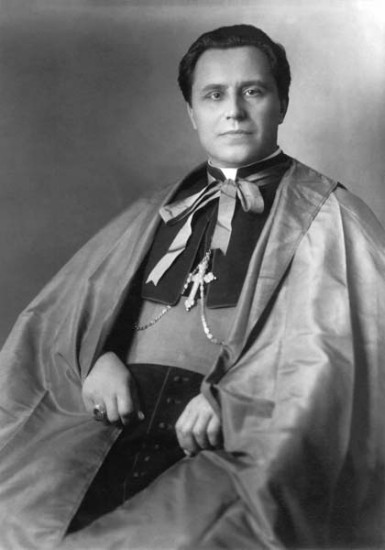 Bishop and Martyr Hryhorii Lakota was born on January 31,1883, in the village of Holodivka, in Lviv District. He studied theology in Lviv. He was ordained to the priesthood in 1908 in Przemsyl (Peremyshl). In Vienna in 1911 he received his Ph.D. in theology. In 1913 he became a professor at the Przemysl seminary, later becoming its rector. On May 16, 1926, he was ordained to the episcopacy and was appointed auxiliary bishop of Przemysl.
Bishop and Martyr Hryhorii Lakota was born on January 31,1883, in the village of Holodivka, in Lviv District. He studied theology in Lviv. He was ordained to the priesthood in 1908 in Przemsyl (Peremyshl). In Vienna in 1911 he received his Ph.D. in theology. In 1913 he became a professor at the Przemysl seminary, later becoming its rector. On May 16, 1926, he was ordained to the episcopacy and was appointed auxiliary bishop of Przemysl.
On June 9, 1946, he was arrested and sentenced to 10 years’ imprisonment. In exile in Vorkuta, Russia, he was distinguished for his great humanness, his humility, his desire to take the most difficult labour on himself and to make the unbearable conditions of life easier for others. He died a martyr for the faith on November 12, 1950, in the village of Abez near Vorkuta.
“Exiled to a labour camp, in the middle of human misery, I also met real angels in human bodies, who by their lives were the earthly representatives of the cherubim, glorifying Christ, the King of Glory. Among them was the confessor of the faith, Hryhorii Lakota, auxiliary bishop of Przemysl. From 1949 to 1950, by his example of Christian virtues, his life witnessed to us who were weakened by life in the labour camp.” – From the written account of Father Alfrysas Svarinskas.
Aristocrat of the Spirit
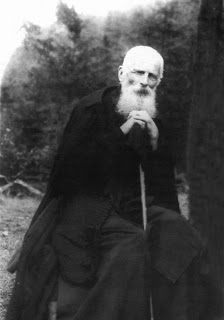 Priest and Martyr Archimandrite Klymentii Sheptytsky, the younger brother of the Servant of God Metropolitan Andrey Sheptytsky, was born on November 17, 1869, in the village of Prylbychi, Yavoriv region. He studied law in Munich and Paris and received a doctorate at the University of Krakow. He was a legate of the Austrian Parliament and member of the National Council. In 1912 he entered the Studite monastery as a late vocation; by so doing he renounced his successful secular career. He completed his theological studies in Innsbruck. On August 28, 1915, he was ordained to the priesthood. For many years he was the hegumen (prior) of the Studite monastery at Univ, and in 1944 he became the archimandrite (abbot).
Priest and Martyr Archimandrite Klymentii Sheptytsky, the younger brother of the Servant of God Metropolitan Andrey Sheptytsky, was born on November 17, 1869, in the village of Prylbychi, Yavoriv region. He studied law in Munich and Paris and received a doctorate at the University of Krakow. He was a legate of the Austrian Parliament and member of the National Council. In 1912 he entered the Studite monastery as a late vocation; by so doing he renounced his successful secular career. He completed his theological studies in Innsbruck. On August 28, 1915, he was ordained to the priesthood. For many years he was the hegumen (prior) of the Studite monastery at Univ, and in 1944 he became the archimandrite (abbot).
During World War II, he gave refuge to persecuted Jews. On June 5, 1947, he was arrested and sentenced to eight years’ imprisonment by a special meeting of the NKVD in Kyiv. He died a martyr for the faith on May 1, 1951, in a harsh prison in Vladimir, Russia.
“Tall, 180-185 centimetres, rather thin, with a long white beard, a little stooped, with a cane. Arms relaxed, calm, face and eyes friendly. He reminded me of St. Nicholas We never expected such a rascal in our room Some sisters had passed three apples to him, real rosy red and ripe. And he gave one apple to Roman Novosad, who often had stomach problems. He said: ‘You need to take care of your stomach,’ and the others he divided among us.” – From the memories of Ivan Kryvytskyi.
Apostles of the Gulag
The unbending faithfulness to Christ and His Church of Confessor of the Faith Metropolitan Josyf Slipyj and all the Greek-Catholic hierarchy, their deep certainty in the victory over evil and their special witness of fidelity to the Roman Apostolic See served as an inspiring example and supported the faith and hope of laity and clergy alike who had avoided arrest and exile and had not spent time in prison.
Prayerful Parent
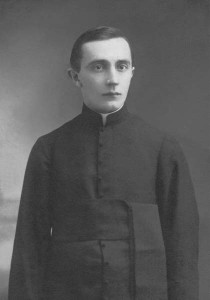 Priest and Martyr Father Mykola Tsehelskyi was born on December 17, 1896, in the village of Strusiv, Ternopil District. In 1923 he graduated from the Theological Faculty of Lviv University. On April 5, 1925, Metropolitan Andrey Sheptytsky ordained him to the priesthood. He was a zealous priest who cared for the spirituality, education and welfare of his parishioners.
Priest and Martyr Father Mykola Tsehelskyi was born on December 17, 1896, in the village of Strusiv, Ternopil District. In 1923 he graduated from the Theological Faculty of Lviv University. On April 5, 1925, Metropolitan Andrey Sheptytsky ordained him to the priesthood. He was a zealous priest who cared for the spirituality, education and welfare of his parishioners.
After the war he was repressed by the Bolsheviks because he refused to convert to Orthodoxy. Father Tsehelskyi drank deep from the bitter cup of intimidation, threats and beatings. On October 28, 1946, he was arrested, and on January 27, 1947, he was sentenced to 10 years’ imprisonment. He was deported to Mordovia, Russia, but his wife, three children and daughter-in-law were taken to Russia’s Chytynska region. He lived in extremely horrid conditions, in a camp that was notoriously strict and cruel. He suffered from severe pain due to illness, but this did not break his strong spirit. He died a martyr for the faith on May 25, 1951, and is buried in the camp cemetery.
“My dearest wife: the feast of the Dormition was our 25th wedding anniversary. I recall fondly our family life together, and every day in my dreams I am with you and the children, and this makes me happy I give a fatherly kiss to all their foreheads, and I hope to live honestly, behaving blamelessly, keeping far from everything that is foul. I pray for this most of all.” – From the letters of Father Mykola Tsehelskyi written in Mordovia.
Suffered on Good Friday
 Priest and Martyr Father Ivan Ziatyk was born on December 26, 1899, in the village of Odrekhiv, near Sianok. After finishing his theology studies in Przemysl (Peremyshl) seminary in 1923, he was ordained to the priesthood. In 1935 he entered the Congregation of the Most Holy Redeemer (Redemptorists). He was a teacher of dogmatic theology and holy scripture, and also known as a good administrator. During the Nazi occupation he was acting superior of the monastery in Ternopil and later in Zboiski near Lviv. After the official liquidation of the UGCC and the exile of Protohegumen Yosyf de Vokhta, Father Ivan took on his duties.
Priest and Martyr Father Ivan Ziatyk was born on December 26, 1899, in the village of Odrekhiv, near Sianok. After finishing his theology studies in Przemysl (Peremyshl) seminary in 1923, he was ordained to the priesthood. In 1935 he entered the Congregation of the Most Holy Redeemer (Redemptorists). He was a teacher of dogmatic theology and holy scripture, and also known as a good administrator. During the Nazi occupation he was acting superior of the monastery in Ternopil and later in Zboiski near Lviv. After the official liquidation of the UGCC and the exile of Protohegumen Yosyf de Vokhta, Father Ivan took on his duties.
On January 5, 1950, he was arrested and found guilty of “preaching the ideas of the pope of Rome regarding the spread of the Catholic faith among nations of the whole world.” At first he was imprisoned in Zolochiv and later was sent to Ozerlah, Irkhutsk region, Russia. In all he lived through 72 interrogations. On Good Friday in 1952 he was severely beaten, drenched with water and left to lie in the cold. He died in the prison infirmary on May 17, 1952, a martyr for the faith.
“He stood and prayed the whole day; for whole days he prayed every moment. He was such a pleasant person to talk to. You could hear many wise and instructive words from him; this was especially so in my case, as at that time I was a youngster.” – From an interview with fellow prisoner Anatolii Medelian.
A Mother to Her Sisters
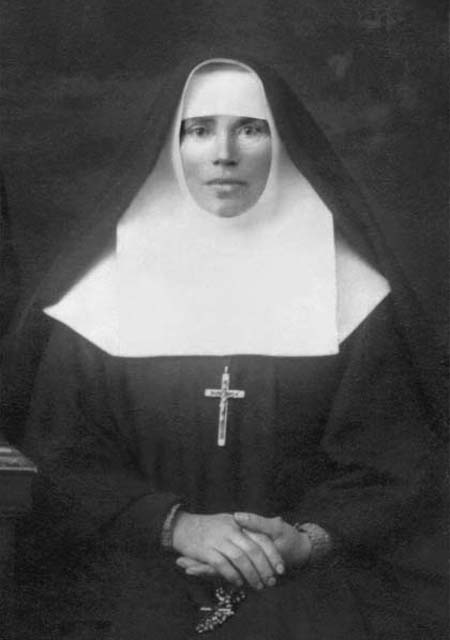 Nun and Martyr Sister Olympia Olha Bida was born in 1903 in the village of Tsebliv, Lviv District. At a young age she entered the congregation of the Sisters of St. Joseph. In 1938 she was assigned to the town of Khyriv where she became superior of the house. After the establishment of the Soviet regime, she and the other sisters suffered a number of attacks on the convent. She, nevertheless, continued to care for children, to catechize and organize underground religious services (often without a priest).
Nun and Martyr Sister Olympia Olha Bida was born in 1903 in the village of Tsebliv, Lviv District. At a young age she entered the congregation of the Sisters of St. Joseph. In 1938 she was assigned to the town of Khyriv where she became superior of the house. After the establishment of the Soviet regime, she and the other sisters suffered a number of attacks on the convent. She, nevertheless, continued to care for children, to catechize and organize underground religious services (often without a priest).
In 1950 she was arrested by soldiers of the NKVD and taken to a hard labour camp in Boryslav. Eventually she was sentenced to lifelong exile in the Tomsk region of Siberia for “anti-Soviet activities.” Even in exile, Sister Olympia tried to perform her duties as superior. She provided support for her fellow sisters. She patiently endured inhuman living conditions. She died a martyr’s death on January 23, 1952.
“God Almighty, God’s Providence will not allow His little children to perish in a foreign land. For He is with us here, in the midst of these forests and waters. He doesn’t forget about us Because of our faith, because of a divine matter, we suffer, and what could be better than this? Let’s follow Him bravely. Not only when all is well, but even when times are bitter, let us say: Glory to God in all matters.” – From Sister Olympia’s letter to her provincial superior, Sister Neonylia.
Faith Amid Hopelessness
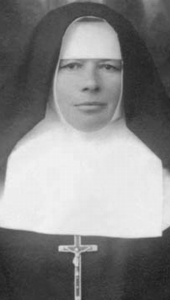 Nun and Martyr Sister Lavrentia Herasymiv was born on September 31, 1911, in the village of Rudnyky, Lviv District. In 1931 she entered the congregation of the Sisters of St. Joseph in Tsebliv. In 1933 she made her first vows. Together with Sister Olympia, in 1938 she went to the house in Khyriv, and their fates were crossed until death. In 1950 she was arrested by the agents of the NKVD and sent to Boryslav.
Nun and Martyr Sister Lavrentia Herasymiv was born on September 31, 1911, in the village of Rudnyky, Lviv District. In 1931 she entered the congregation of the Sisters of St. Joseph in Tsebliv. In 1933 she made her first vows. Together with Sister Olympia, in 1938 she went to the house in Khyriv, and their fates were crossed until death. In 1950 she was arrested by the agents of the NKVD and sent to Boryslav.
Eventually, together with her fellow sister she was sentenced to lifelong exile in the Tomsk region. She was sick with tuberculosis when she arrived to her designated place of exile and so only one family would agree to give her a roof over her head. This was in a room where a paralyzed man lay behind a partition. She prayed much and performed various forms of manual labor. She patiently endured the inhuman living conditions and the lack of medical attention. She died on August 28, 1952, as a martyr for the faith in the village of Kharsk in Siberia’s Tomsk Region.
“The NKVD agents attacked our convent. They spent a long time breaking down the door. It was night-time; the sisters were terrified. Sister Lavrentia ran to the cellar and escaped into the garden through a little window. A cold rain started to fall. When the NKVD broke into the house they immediately noticed the open window and ran to look for her. It was dark and with their bayonets they poked every bush. A few times the bayonet was right in front of Sister’s eyes. Not finding her, the NKVD went away, but sister was out in the rain until the morning. She came to the house exhausted and frozen. After this incident she got seriously ill, and lay in bed. They took her to prison when she was infirm.” – From the memories of a relative, Anna Harasymiv.
Berlin Founder
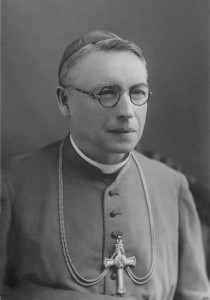 Priest and Martyr Father Petro Verhun was born on November 18, 1890, in Horodok, Lviv District. He held a Ph.D. in philosophy. On October 30, 1927, he was ordained to the priesthood by Metropolitan Andrey Sheptytsky at St. George’s Cathedral and was appointed to be the pastor and later the apostolic visitator for Ukrainian Catholics in Germany. Priests and all the faithful, whom fate had brought to a foreign land, gravitated to Father Verhun because they felt he was a good shepherd who would give his life for his sheep.
Priest and Martyr Father Petro Verhun was born on November 18, 1890, in Horodok, Lviv District. He held a Ph.D. in philosophy. On October 30, 1927, he was ordained to the priesthood by Metropolitan Andrey Sheptytsky at St. George’s Cathedral and was appointed to be the pastor and later the apostolic visitator for Ukrainian Catholics in Germany. Priests and all the faithful, whom fate had brought to a foreign land, gravitated to Father Verhun because they felt he was a good shepherd who would give his life for his sheep.
In June 1945 he was arrested by the Soviet security services in Berlin and sent to Siberia, sentenced to eight years of hard labour. But even there, amid unbearable living conditions, he knew how to gather the faithful around him, giving his own personal example of perseverance in the faith. He died as a martyr for the faith on February 7, 1957, in exile in the village of Anharsk, in the Krasnoyar territory.
“My life is very monotonous. I have enough to eat. I cook for myself. My greatest joy is that I can pray every day without disturbances Finally I don’t need anything. I feel that my head is tending little by little to my eternal rest. But I really would rather die in the monastery.” – From the letters of Father Petro Verhun written in Siberian exile.
Pastor of the East
 Priest and Martyr Father Oleksii Zarytskyi was born in 1912 in the village of Bilche, in the Lviv District. From 1931 to 1934 he studied at the Lviv Theological Academy. He was ordained to the priesthood by Metropolitan Andrey Sheptytsky in 1936. During his ministry in the village of Strutyna near Zolochiv he gained the special favour of his parishioners. In 1948 he was sentenced to 10 years’ imprisonment in the camps of Siberia and Kazakstan for refusing to convert to Orthodoxy.
Priest and Martyr Father Oleksii Zarytskyi was born in 1912 in the village of Bilche, in the Lviv District. From 1931 to 1934 he studied at the Lviv Theological Academy. He was ordained to the priesthood by Metropolitan Andrey Sheptytsky in 1936. During his ministry in the village of Strutyna near Zolochiv he gained the special favour of his parishioners. In 1948 he was sentenced to 10 years’ imprisonment in the camps of Siberia and Kazakstan for refusing to convert to Orthodoxy.
After his rehabilitation in 1957, he returned to western Ukraine a number of times but again returned to the east. Amid inhuman conditions Father Zarytskyi had a wide field for pastoral ministry to people in a foreign land. He tirelessly took care not only of Ukrainians but Poles, Germans, Russians, Greek and Roman Catholics. He visited Metropolitan Josyf Slipyj in exile.
Father Zarytskyi was sentenced a second time: two years for “vagrancy.” The guardian of children, youth, the poor, he will forever remain in people’s memory an example of the embodiment in life of the commandments to love God and neighbour. He died a martyr for the faith on October 30, 1963, in a labour camp in a village in Karaganda. His mortal remains were reburied in 1990 in the village of Riasna-Ruska near Lviv.
“That was in 1957 during Lent, on Palm Sunday. Almost the whole village was waiting for him. There were even people who went to the Orthodox Church, who hadn’t made their confession; they were still waiting … And they waited until he came. When we told them that Father Zarytskyi was here, everyone came to us to confess. Confessions started in the evening and lasted almost to the morning. At dawn Father Zarytskyi celebrated the divine liturgy. Very many people took advantage of the opportunity: young and old. They got married, children were baptized. Father Zarytskyi stayed with us the whole summer. But on September 21 he had to leave for Karaganda; he had to return because they were waiting for him there” – From an interview with Sister Konstantsia Seniuk.
Light in the Catacombs
Stalin’s death in March 1953 and Khruschev’s “thaw” began a new period in the way of the cross of the UGCC: the catacombs. The main protagonists of this period of the Church’s life were the bishops, priests, monks, nuns and faithful who had returned home from the camps and exile. Having survived unspeakable physical and moral tortures, they encountered a different western Ukraine: bloodless, frightened by the terror, deceived by the atheist-communist ideology, but in spite of all that it was still alive and waiting for the resurrection.
These people who knew how to preserve in their hearts faith in Christ and faithfulness to their Church became little islands around which the gradual renewal of Church structures began. Thanks to the unbending character of the martyr bishops, the perseverance of the clergy and the faithfulness of the laity, the UGCC survived the period of official “liquidation,” organized the underground and gave birth to a new generation of Church leaders. For almost half a century it was the largest illegal Christian community in the world and at the same time the largest organism of social opposition to the totalitarian system of the USSR.
“And so take up every divine weapon so that you can stand fast during the storms and, overcoming everything, survive. Stand up, therefore, girding your thigh with truth and clothing yourself with the armour of justice … But above all take in your hands the shield of faith, with which you will be able to defeat the fiery arrows of the Evil One. And take up the helmet of salvation and the spiritual sword, which is the word of God.” – From a letter of Metropolitan Josyf Slipyj, written in exile, February 17, 1961.
Healer of Souls
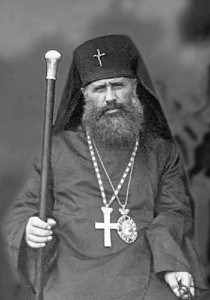 Bishop and Martyr Mykola Charnetskyi was born on September 14, 1884, in the village of Semakivtsi, Ivano-Frankivsk District. After he completed his studies at the local seminary in Rome, he was ordained to the priesthood in 1909. He obtained his doctorate in dogmatic theology from Rome and became a spiritual director and professor at the seminary in Ivano-Frankivsk. In 1919 he entered the novitiate of the Redemptorist Fathers in Lviv, and in 1926 he was appointed apostolic visitator for Ukrainian Catholics in Volyn, Polissia, Kholm and Pidliashia. A model religious leader and missionary, he zealously worked for the union of the Holy Church. He was ordained to the episcopacy by Bishop Hryhorii Khomyshyn in Rome on February 2, 1931.
Bishop and Martyr Mykola Charnetskyi was born on September 14, 1884, in the village of Semakivtsi, Ivano-Frankivsk District. After he completed his studies at the local seminary in Rome, he was ordained to the priesthood in 1909. He obtained his doctorate in dogmatic theology from Rome and became a spiritual director and professor at the seminary in Ivano-Frankivsk. In 1919 he entered the novitiate of the Redemptorist Fathers in Lviv, and in 1926 he was appointed apostolic visitator for Ukrainian Catholics in Volyn, Polissia, Kholm and Pidliashia. A model religious leader and missionary, he zealously worked for the union of the Holy Church. He was ordained to the episcopacy by Bishop Hryhorii Khomyshyn in Rome on February 2, 1931.
He was arrested by the NKVD on April 11, 1945, and sentenced to six years of hard labour in Siberia. According to official data, he underwent 600 hours of interrogation and torture and spent time in 30 different prisons and camps. Terminally ill, in 1956 he was permitted to return to western Ukraine, where he secretly continued to fulfil his episcopal obligations. In the midst of the cruelty and oppression which he suffered in imprisonment and in exile, he was distinguished for his evangelical patience, gentleness and limitless goodness; already during his life he was considered a holy man. As a consequence of his sufferings, he died a martyr for the faith on April 2, 1959, in Lviv.
“I saw him. He was a very humble person. The first time I came for instruction from the bishop, he was sweeping the house. I wanted to help him, to take the broom, but he didn’t let me. He himself swept. ‘Have a seat,’ he said. I was embarrassed that the bishop was sweeping, but I was sitting, because he wouldn’t let me. He told how many priests who had signed over to Orthodoxy, came to him to confess nearly 300 priests, they repented and came to him.” – From an interview with Father Vasyl Voronovskyi.
Discrete Member of the Underground
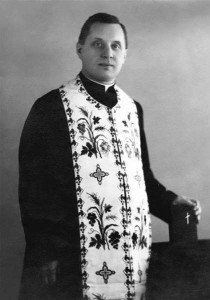 Bishop and Martyr Semeon Lukach was born on July 7, 1893, in the village of Starunia, Ivano-Frankivsk District. In 1913 he entered the seminary. He finished the seminary in Ivano-Frankivsk and was ordained a priest in 1919. In December 1920 he was appointed professor of moral theology at the seminary where he had earlier studied. He secretly received episcopal ordination in the spring of 1945 before the arrest of Bishop Hryhorii Khomyshyn. On October 26, 1949, he was arrested by the Soviet secret police. Sentenced in August 1950 to 10 years of imprisonment, he carried out hard labour in a lumber camp in Krasnoyarsk. He was freed on February 11, 1955, and returned to his native land. In July 1962 he was arrested for a second time and was sentenced to five years in a severe colony. During his interrogations he showed his unbroken perseverance, discretion and faithfulness to the Catholic Church. In March 1964 because of his critical condition, tuberculosis of the lungs, he was taken to his native village, Starunia. He died a martyr for the faith on August 22, 1964.
Bishop and Martyr Semeon Lukach was born on July 7, 1893, in the village of Starunia, Ivano-Frankivsk District. In 1913 he entered the seminary. He finished the seminary in Ivano-Frankivsk and was ordained a priest in 1919. In December 1920 he was appointed professor of moral theology at the seminary where he had earlier studied. He secretly received episcopal ordination in the spring of 1945 before the arrest of Bishop Hryhorii Khomyshyn. On October 26, 1949, he was arrested by the Soviet secret police. Sentenced in August 1950 to 10 years of imprisonment, he carried out hard labour in a lumber camp in Krasnoyarsk. He was freed on February 11, 1955, and returned to his native land. In July 1962 he was arrested for a second time and was sentenced to five years in a severe colony. During his interrogations he showed his unbroken perseverance, discretion and faithfulness to the Catholic Church. In March 1964 because of his critical condition, tuberculosis of the lungs, he was taken to his native village, Starunia. He died a martyr for the faith on August 22, 1964.
“I celebrated divine liturgy in an apartment and in a few houses. From one to 30 people took part in the services I also baptized and celebrated marriages But conscience does not allow me to mention their names, so that my mistake will not cause those people who sought spiritual help from me to suffer. I acted in good faith, serving God’s will, so I was in danger of colliding with state laws. If the state finds me guilty, I myself will take the responsibility.” – From the autobiography in the court case written after his arrest in 1949.
Unbroken “Conversationalist”
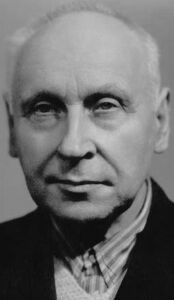 Bishop and Martyr Ivan Sleziuk was born on January 14, 1896, in the village of Zhyvachiv, Ivano-Frankivsk District. After graduating from the eparchial seminary in 1923 he was ordained to the priesthood. He served as a catechist and spiritual director in Ivano-Frankivsk. In April of 1945 Bishop Hryhory Khomyshyn secretly ordained him a bishop. On June 2, 1945, Bishop Sleziuk was arrested, and a year later he was sentenced to 10 years’ imprisonment. He served his sentence in camps in Vorkuta and Mordovia, Russia. Released from prison, he returned to Ivano-Frankivsk and carried out the duties of administrator of the eparchy.
Bishop and Martyr Ivan Sleziuk was born on January 14, 1896, in the village of Zhyvachiv, Ivano-Frankivsk District. After graduating from the eparchial seminary in 1923 he was ordained to the priesthood. He served as a catechist and spiritual director in Ivano-Frankivsk. In April of 1945 Bishop Hryhory Khomyshyn secretly ordained him a bishop. On June 2, 1945, Bishop Sleziuk was arrested, and a year later he was sentenced to 10 years’ imprisonment. He served his sentence in camps in Vorkuta and Mordovia, Russia. Released from prison, he returned to Ivano-Frankivsk and carried out the duties of administrator of the eparchy.
In 1962 he was arrested for the second time, together with Bishop Semeon Lukach, and was sentenced to five years’ imprisonment in harsh camps. After his release in 1968 he ordained Basilian Sofron Dmyterko a bishop. Bishop Dmyterko succeeded him in guiding the eparchy. In his final years Bishop Sleziuk was often called to the KGB for regular “conversations.” After one of these “conversations” he fell ill and never recovered. He died a martyr for the faith on December 2, 1973, in Ivano-Frankivsk.
“As the deceased himself said, they locked him in a separate isolated area, and no one visited him. He stayed there for two hours. Then they told him: ‘You’re free to go.’ It was difficult for him to walk because, as he himself said, after this he felt dizzy, as if he had a fever, his skin was burning. The Sisters of St. Vincent, who helped him out, also said that the bishop returned from this ‘conversation’ with a very red face, he felt exhausted, stayed in bed and died two weeks later. There was and still is a suspicion that the KGB used radiation to get rid of one more Uniate bishop.” – From the testimony of Bishop Sofron Dmyterko.
Worthy Acting Head
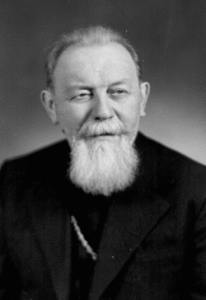 Bishop and Martyr Vasyl Velychkovsky was born June 1, 1903, in Ivano-Frankivsk. In 1920 he entered the seminary in Lviv. In 1925 in Holosko, near Lviv, he took his first religious vows in the Order of the Most Holy Redeemer and was ordained a priest. Father Vasyl became a missionary in Volyn. In 1942 he became the hegumen (prior) of the monastery in Ternopil, where he was arrested in 1945. He was then taken to Kyiv. His death sentence was soon commuted to 10 years of imprisonment and hard labor. He returned to Lviv in 1955, where he continued his pastoral work.
Bishop and Martyr Vasyl Velychkovsky was born June 1, 1903, in Ivano-Frankivsk. In 1920 he entered the seminary in Lviv. In 1925 in Holosko, near Lviv, he took his first religious vows in the Order of the Most Holy Redeemer and was ordained a priest. Father Vasyl became a missionary in Volyn. In 1942 he became the hegumen (prior) of the monastery in Ternopil, where he was arrested in 1945. He was then taken to Kyiv. His death sentence was soon commuted to 10 years of imprisonment and hard labor. He returned to Lviv in 1955, where he continued his pastoral work.
In 1963 he was secretly ordained an archbishop in a Moscow hotel by Metropolitan Josyf Slipyj, who, on his way to exile in Rome, passed Bishop Velychkovsky the responsibility for the catacomb Church. Predicting his own possible arrest, he ordained new underground bishops in 1964. Among them was his successor, Archbishop Volodymyr Sterniuk, who eventually led the Church out of the underground. In 1969 Bishop Velychkovsky was arrested a second time, but after three years of imprisonment he was deported outside the USSR. He died in Winnipeg on June 30, 1973, as a consequence of serious heart disease which began when he was in prison.
“After many years spent in prisons and labour camps, how pleasant it is to be free with my fellow Ukrainians. What joy to go to pray freely in a Ukrainian church, where no one will send you to the camps or prison because of your prayers The prisons and camps ruined my health and my strength, but this was my fate, the Lord God placed this cross on my shoulders.” – From the last speech of Bishop Vasyl Velychkovsky to the faithful in Canada, June 17, 1973.
In Lieu of an Epilogue
“The metropolitan lay calmly with eyes shut and breathed with difficulty, as he had previously. Then he began to pray again. He opened his eyes and began to talk to us: ‘Our Church will be ruined, destroyed by the Bolsheviks, but you will hold on, do not renounce the faith, the Catholic Church. A difficult trial will fall on our Church, but it is passing. I see the rebirth of our Church, it will be more beautiful, more glorious than of old, and it will embrace all our people. ‘Ukraine,’ the metropolitan continued, ‘will rise again from her destruction and will become a mighty state, united, great, comparable to other highly-developed countries. Peace, well-being, happiness, high culture, mutual love and harmony will rule here. It will all be as I say. It is only necessary to pray that the Lord God and the mother of God will care for our poor tired people, who have suffered so much and that God’s care will last forever.’” – From an interview with Father Yosyf Kladochnyi about Metropolitan Andrey Sheptytsky’s last moments of earthly life.
Source
The official website of the papal visit to Ukraine, http://www.papalvisit.org.ua. Oleh Turii, candidate of historical studies and acting director of the Institute of Church History at the Lviv Theological Academy, prepared this text on the basis of materials of the Postulation Center for the Beatification and Canonization of Saints of the UGCC and the archives of the Institute of Church History at the LTA.
The Beatified
- Sister Josaphata (Michaelina) Hordashevska
- Father Leonid Feodorov
- Father Mykola Konrad
- Volodymyr Pryima
- Father Andrii Ischak
- Father Severian Baranyk
- Father Yakym Senkivskyi
- Father Zenovii Kovalyk
- Father Emilian Kovch
- Sister Tarsykia Matskiv
- Father Vitalii Bairak
- Father Roman Lysko
- Bishop Hryhorii Khomyshyn
- Bishop Theodore Romzha
- Bishop Josaphat Kotsylovsky
- Bishop Mykyta Budka
- Bishop Hryhorii Lakota
- Archimandrite Klymentii Sheptytsky
- Father Mykola Tsehelskyi
- Father Ivan Ziatyk
- Sister Olympia Olha Bida
- Sister Lavrentia Herasymiv
- Fahter Petro Verhun
- Father Oleksii Zarytskyi
- Bishop Mykola Charnetskyi
- Bishop Semeon Lukach
- Bishop Ivan Sleziuk
- Bishop Vasyl Velychkovsky


